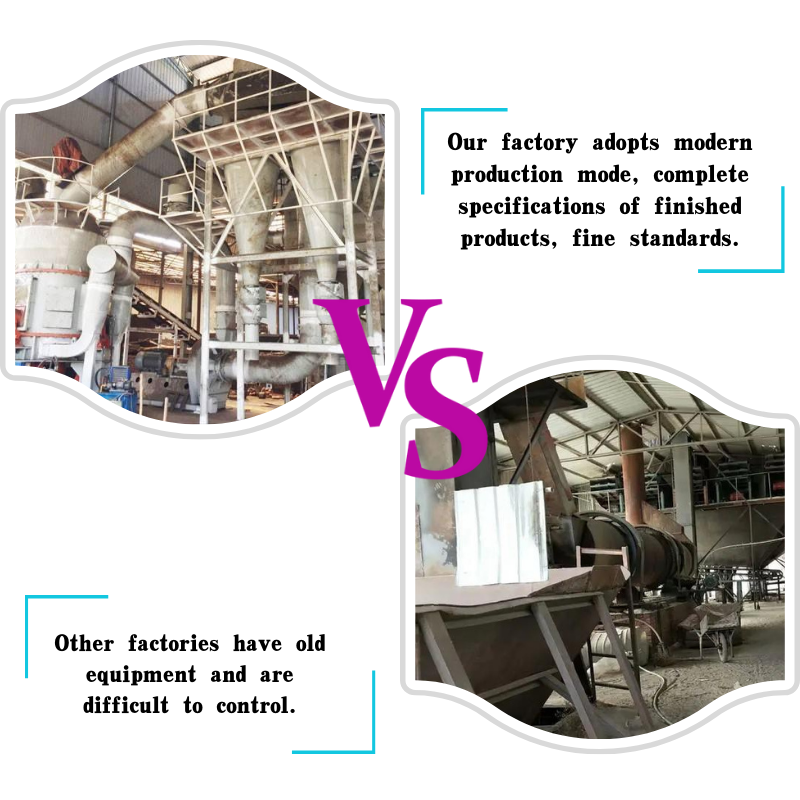
Innovative Uses and Applications of Industrial Talc in Various Industries
Industrial Talc An Overview
Talc, a naturally occurring mineral, has garnered significant attention due to its diverse applications across various industries. Composed primarily of magnesium, silicon, and oxygen, talc is known for its softness and unique properties, making it a valuable material in industrial processes. This article explores the characteristics, applications, and market trends of industrial talc.
Characteristics of Talc
Talc is the softest mineral on the Mohs scale of mineral hardness, scoring just a 1. This property makes it easily grindable, resulting in a fine powder that is essential in many applications. Additionally, talc's hydrophobic nature makes it an excellent anti-caking agent, helping to prevent clumping in powder formulations. Talc is also chemically inert, which allows it to withstand high temperatures and harsh environments without degrading.
One of the most distinctive features of talc is its ability to absorb moisture. This characteristic is particularly beneficial in applications where the control of moisture content is crucial. Furthermore, talc has excellent lubricating properties, which contribute to its widespread use in manufacturing processes.
Applications of Industrial Talc
The versatility of talc is evident in its numerous industrial applications. The following are the primary sectors that utilize talc
1. Plastics and Polymers Talc is widely used as a filler material in the production of plastics. Its inclusion not only improves the mechanical properties of the final products but also enhances their thermal stability. Common applications include automotive components, household items, and packaging materials.
industrial talc

2. Paints and Coatings In the paint industry, talc is valued for its ability to improve texture, durability, and opacity. It also helps to reduce the overall production costs by allowing manufacturers to replace more expensive raw materials with talc.
3. Ceramics Talc is a critical ingredient in the manufacturing of ceramics, including porcelain and stoneware. It contributes to the plasticity of the clay body, improving workability during production and enhancing the final product's performance.
4. Papers and Cosmetics The paper industry employs talc as a filler and coating agent, which helps to enhance printability and smoothness. In cosmetics, talc is commonly used due to its ability to absorb moisture and provide a silky feel, making it a popular ingredient in products like face powders and body powders.
5. Pharmaceuticals In the pharmaceutical sector, talc is used as an excipient in tablet formulation and as an anti-caking agent in powdered medications.
Market Trends and Future Prospects
The global talc market has been witnessing steady growth, fueled by the increasing demand from various end-user industries. According to recent reports, the rise in automotive production, coupled with a surge in the construction sector, is expected to bolster the talc market significantly.
Moreover, the trend toward sustainable and eco-friendly materials has led many manufacturers to seek natural alternatives, positioning talc as an attractive option. Innovations in talc processing and the development of new applications are also anticipated to expand its market reach.
In conclusion, industrial talc is a multifaceted mineral that plays a crucial role in various industries. Its unique properties and versatility make it indispensable in manufacturing processes that require high performance and cost-efficiency. As market dynamics evolve, talc's importance is likely to grow, solidifying its position as a key player in the industrial landscape.
Share
-
Premium Glass Sand Solutions | High Purity SupplyNewsAug.03,2025
-
Premium Talcum Powder Enhanced with GPT-4 Turbo | Soft & Long-LastingNewsAug.02,2025
-
Fly Ash Solutions Enhanced by GPT-4 Turbo | Sustainable InnovationNewsAug.01,2025
-
Natural Premium Bentonite Cat Litter - Superior ClumpingNewsJul.31,2025
-
Premium Resin Coated Sand - High Heat Resistance CastingNewsJul.31,2025
-
High Quality Silicon Carbide Grit for Abrasive ApplicationsNewsJul.30,2025






